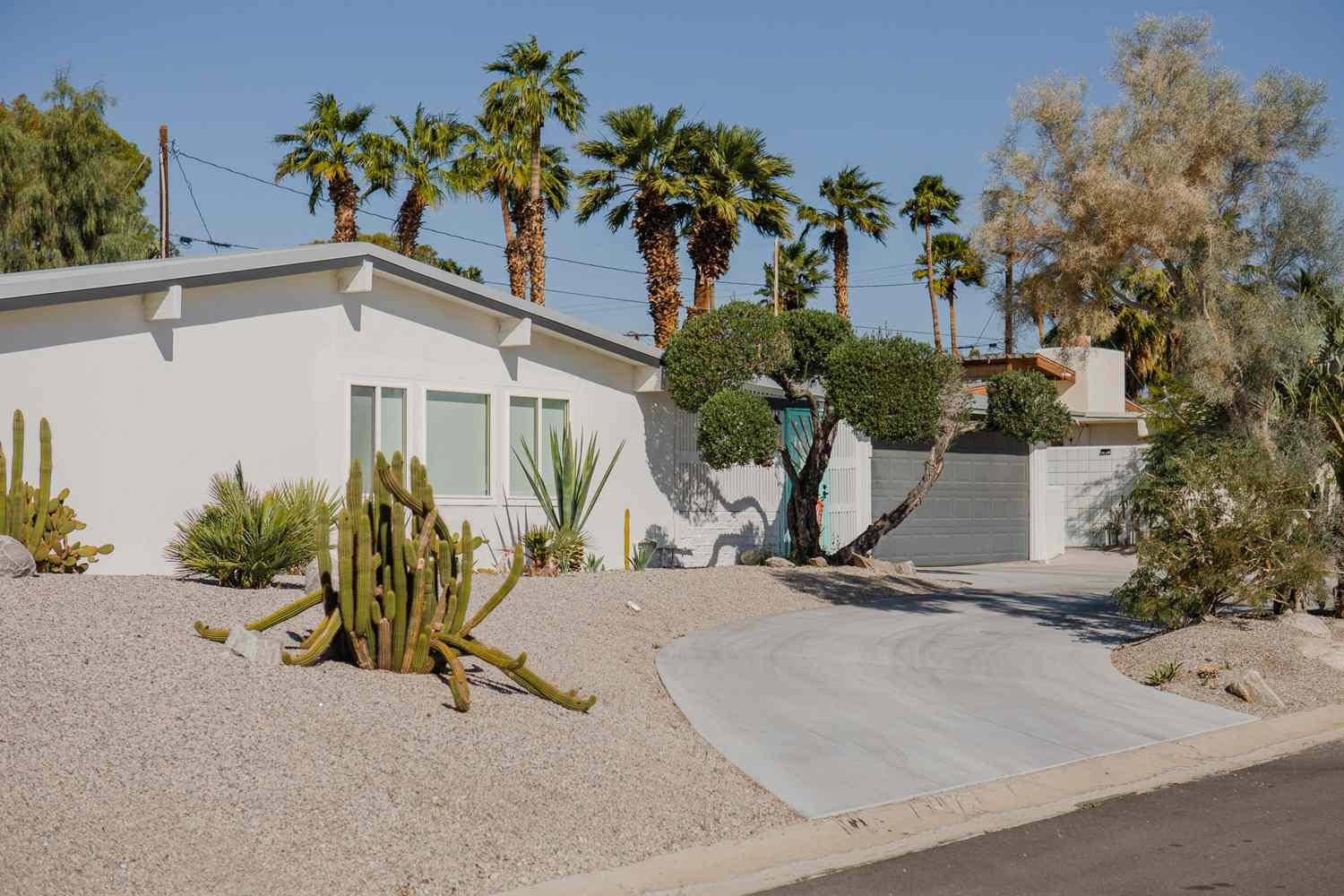Ranch-style homes are incredibly popular throughout the United States, so there’s a good chance you’ve been in one before. Dating back to the middle of the 20th century, most of these single-story homes are still standing today. Whether you own one yourself or you’ve visited one, you probably already have an idea of some of the characteristics of a ranch-style home.
What Is a Ranch-Style Home?
Ranch-style homes are single-story houses. A ranch-style home often has an open-concept or L-shaped floor plan, large windows, a low-pitched roof, sliding glass doors to an outdoor eating space, and sometimes a front porch.
Often built on a concrete slab, these homes are typically only a single level (a split-level ranch will have multiple levels, but we’ll get to that later) and feature an open floor plan. For many homeowners, the ease of having everything on a single story and the focus on indoor-outdoor living makes ranch homes highly desirable.
Depending on where in the country a ranch is built, it can have an attached garage and basement. Plus, you can often build out and expand the home fairly easily, making it a popular choice for anyone with a lot of land.
Key Characteristics of a Ranch Home
You can recognize a ranch home from its sprawling layout which can be straight and rectangular, U-shaped, or L-shaped, along with its single-story floor plan. Built on the ground level, you don’t typically have to walk onto a porch to get into the home as you might with a bungalow or craftsman-style home, though some ranches may have a small, low front stoop or porch. Here are some other key characteristics of a ranch home:
- Once inside, the interior is designed with an open-concept layout that has few or no walls between the living and dining areas.
- A ranch-style home is built to have easy access to the outdoors, including features such as large windows on all sides of the house, and ground-level entry points to create a smooth transition between indoor and outdoor living spaces.
- There may or may not be a basement because many ranch homes are built on concrete slab foundations.
- Sometimes there’s a very low porch connecting indoor-outdoor spaces but you won’t find a tall deck on a true single-level ranch-style home.
- Some common exterior features include a low-pitch roof, overhanging eaves, and attached garages.
History of the Ranch
Ranch homes are thought to have originated in California during the 1930s when architect Clifford May, known as the “father of the ranch house,” began to design single-story homes built for casual outdoor living.
A contrast to the small, segmented rooms of a craftsman, a traditional ranch home featured an open floor plan with special attention paid to accessibility, openness, and space. Focused on informal living and indoor-outdoor flow, the ranch was an architectural force in California throughout the 1930s before spreading across the country. No longer were homeowners looking for formal dining rooms and segmented spaces—they wanted a family-oriented home that struck a contrast to the houses they grew up in.
By the 1950s, nearly nine out of every 10 homes built was a ranch, and the trend spread from coast to coast. Considered the house of the suburbs, these homes popped up in developments as families moved away from the city’s urban core, seeking more space and land. The midcentury homes which took off around the same time can also be considered a kind of ranch.
Even though ranch-style homes dominated the mid-20th century, by the 1970s homeowners were drawn once again to two-story living, and the design lost some of its popularity.
Types of Ranch Homes
Though you may just group them all together, there are actually many different types of ranch homes. A few you’ll recognize include:
- California Ranch: The original ranch-style home. Built to be a sprawling space that transitions the indoors and outdoors throughout the space.
- Suburban Ranch: This is the type of ranch you probably associate most readily with the architectural style. Known for its boxy exterior and open layout interior, this is the house that truly sums up the 1950s suburb.
- Split-level Ranch: Though these homes appear to be traditional ranches, inside they have three stories. A half-staircase leads to both the downstairs level and upstairs.
- Storybook Ranch: If you see a ranch-style home that is full of charm and details, it’s probably a storybook ranch. These homes feature detailed trim, diamond-shaped windows, exposed rafters, and a steeper gable roof.
- Raised Ranch: This style of ranch home is not a split-level home but is often called a split-entry home. These have just two floors: an upper floor and a lower ground-level floor.
Benefits and Disadvantages of Ranch Homes
Benefits
- Open living space
- Easy to clean and maintain
- Safer for seniors and those with limited mobility
Disadvantages
- Requires more property to spread out
- Less yard space
- Less interior privacy with an open plan
Fun Facts
- The ranch-style house was inspired by the Spanish Colonial homes that popped up in Southern California and quickly became the new standard in indoor-outdoor living.
- When soldiers came back from World War II, families moved to the suburbs, where communities were relished and homes were affordable. A suburban-style ranch could be built quickly, and was attainable for the middle class, helping to bolster its popularity in the 1950s.
- Though the ranch-style house may no longer be the most sought-after new build in America, it is still very popular and continues to be a desirable type of home—especially for downsizing and mature populations that value the lack of stairs and an accessible floor plan.
